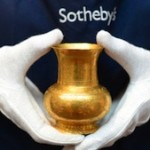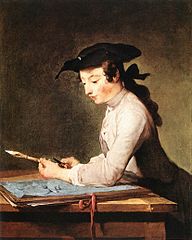 In the wake of the Western expansion, a fast growing number of non-European artefacts entered the European market. They initially made their way into princely cabinets of curiosities. Made possible by the forced opening and exploitation of more and more parts of the world and pushed by social and technological changes of the time, the 18th century brought a boom of the market of non-European artefacts in Europe. This came along with the emergence of a broader collecting culture and the development of a rich museumscape.
In the wake of the Western expansion, a fast growing number of non-European artefacts entered the European market. They initially made their way into princely cabinets of curiosities. Made possible by the forced opening and exploitation of more and more parts of the world and pushed by social and technological changes of the time, the 18th century brought a boom of the market of non-European artefacts in Europe. This came along with the emergence of a broader collecting culture and the development of a rich museumscape.
This market and its development between 18th and 20th century in terms of actors and networks involved, methods and places of exchange . . . → En lire plus


